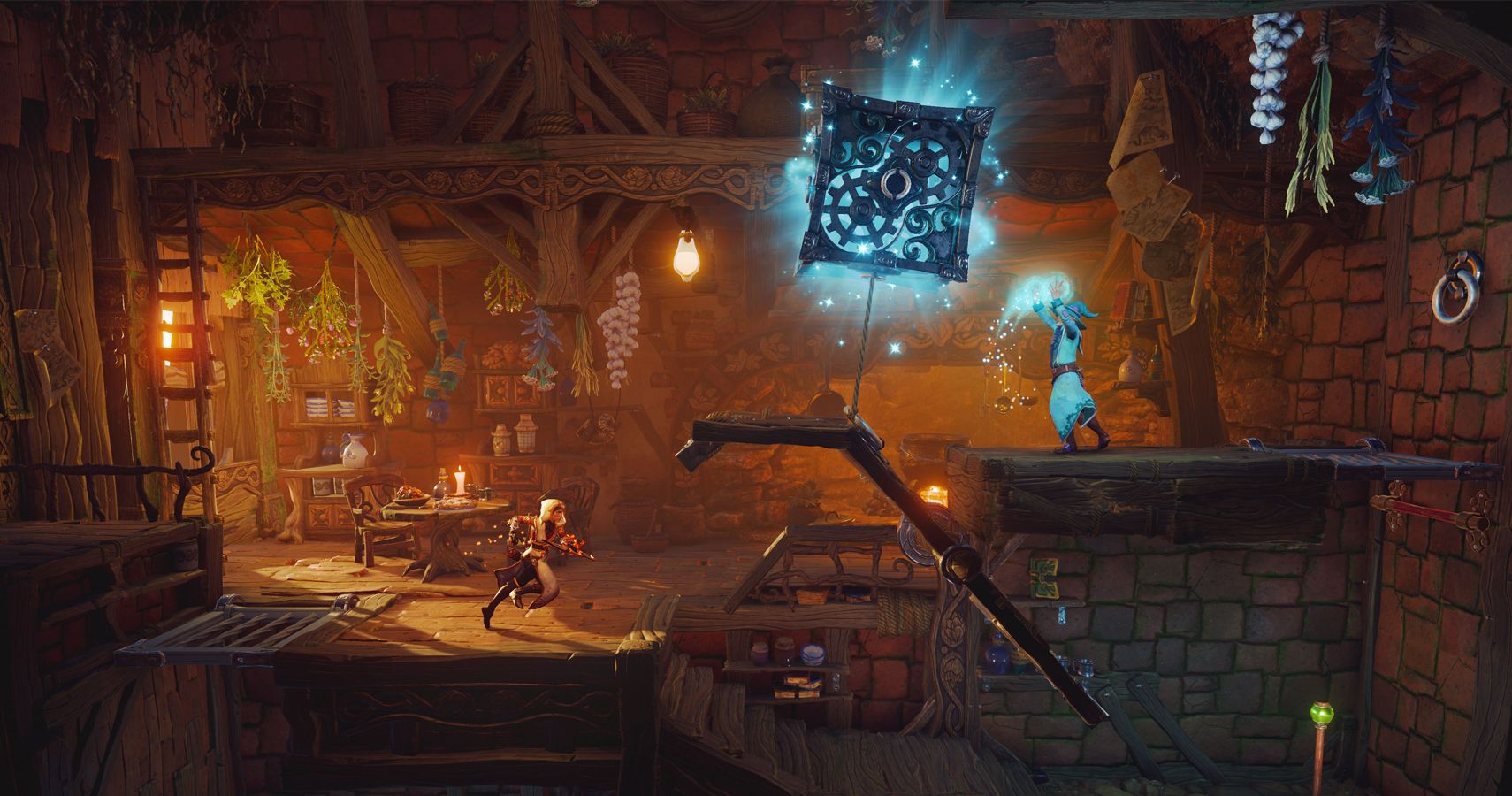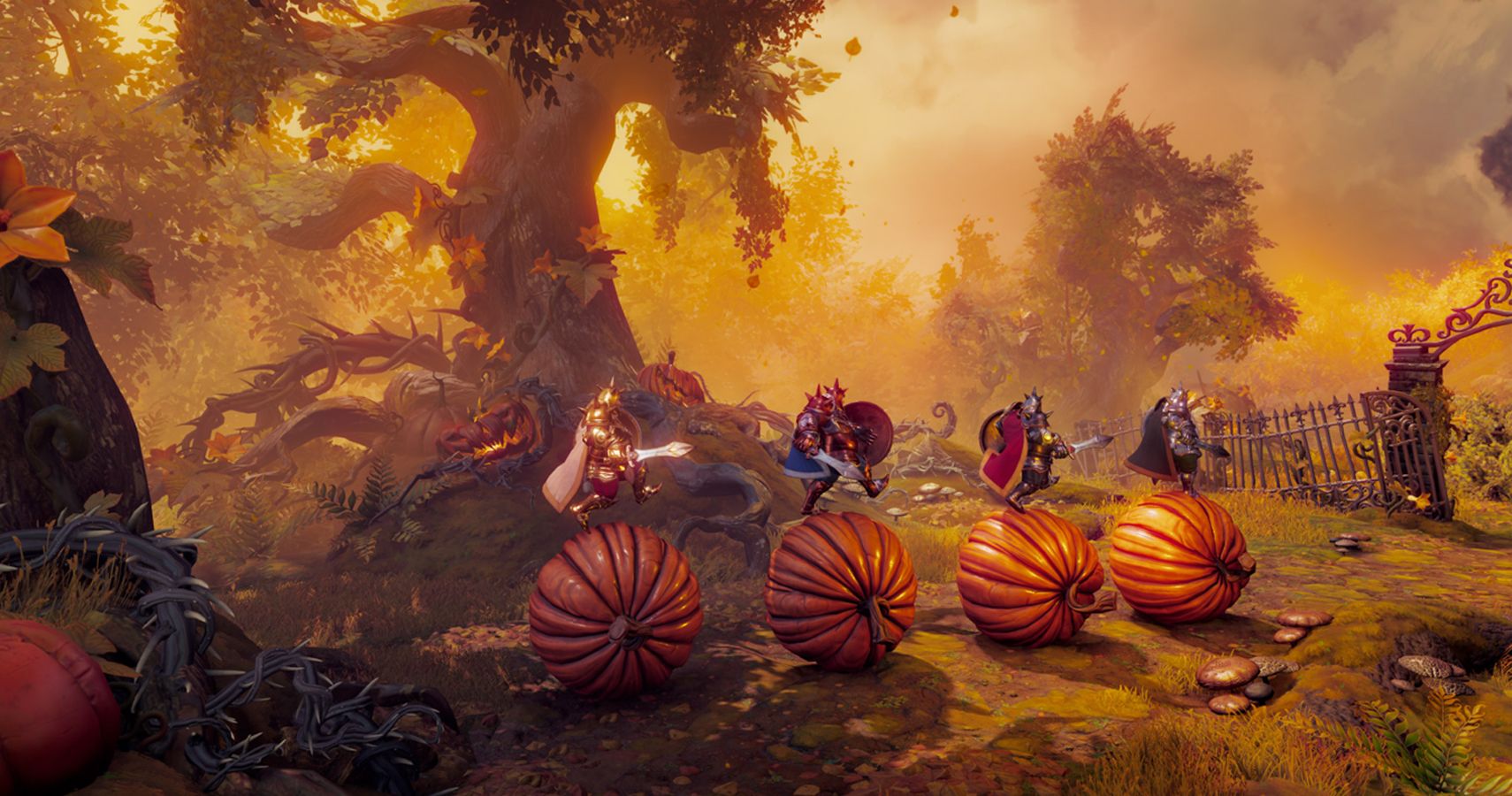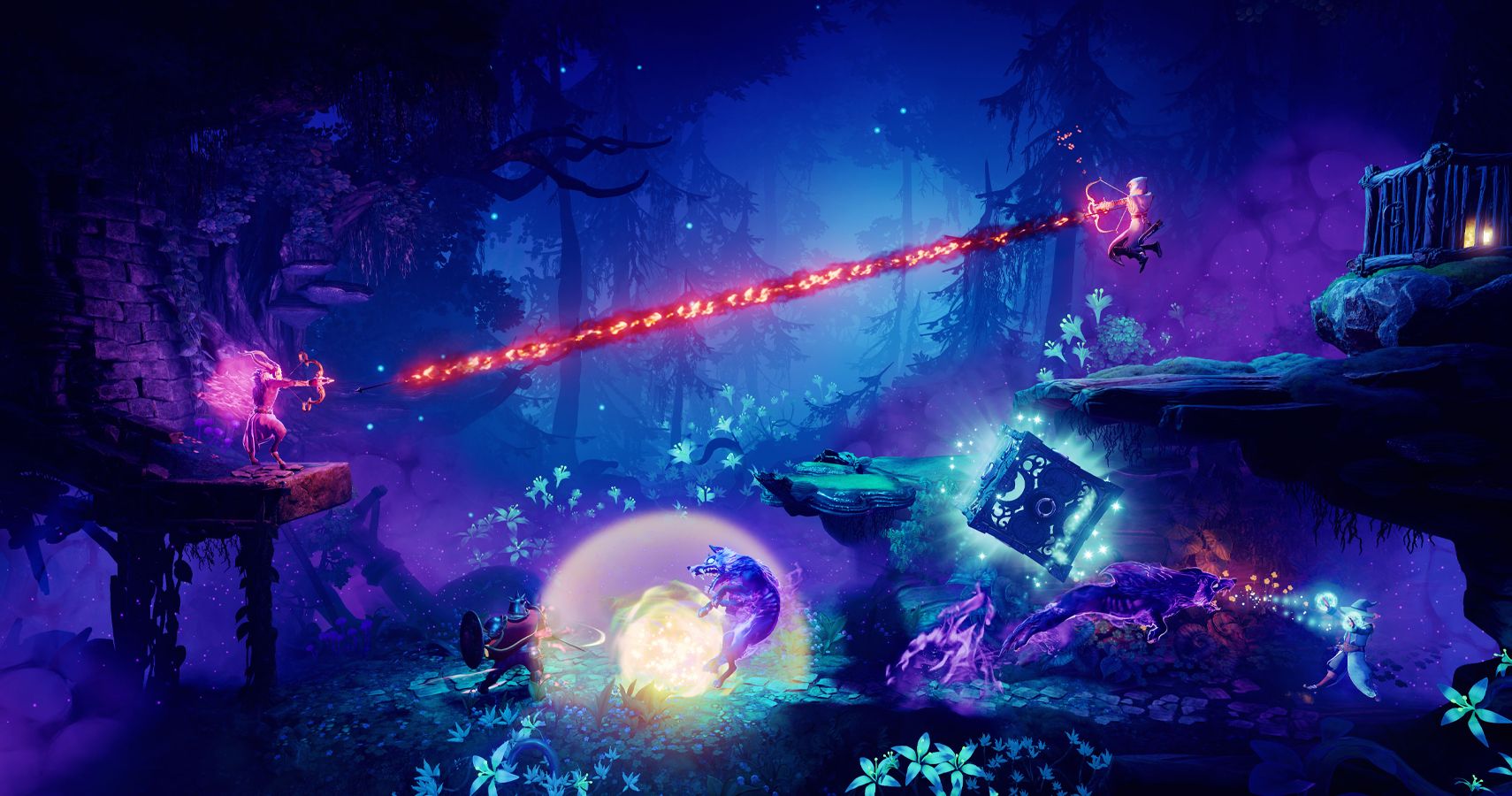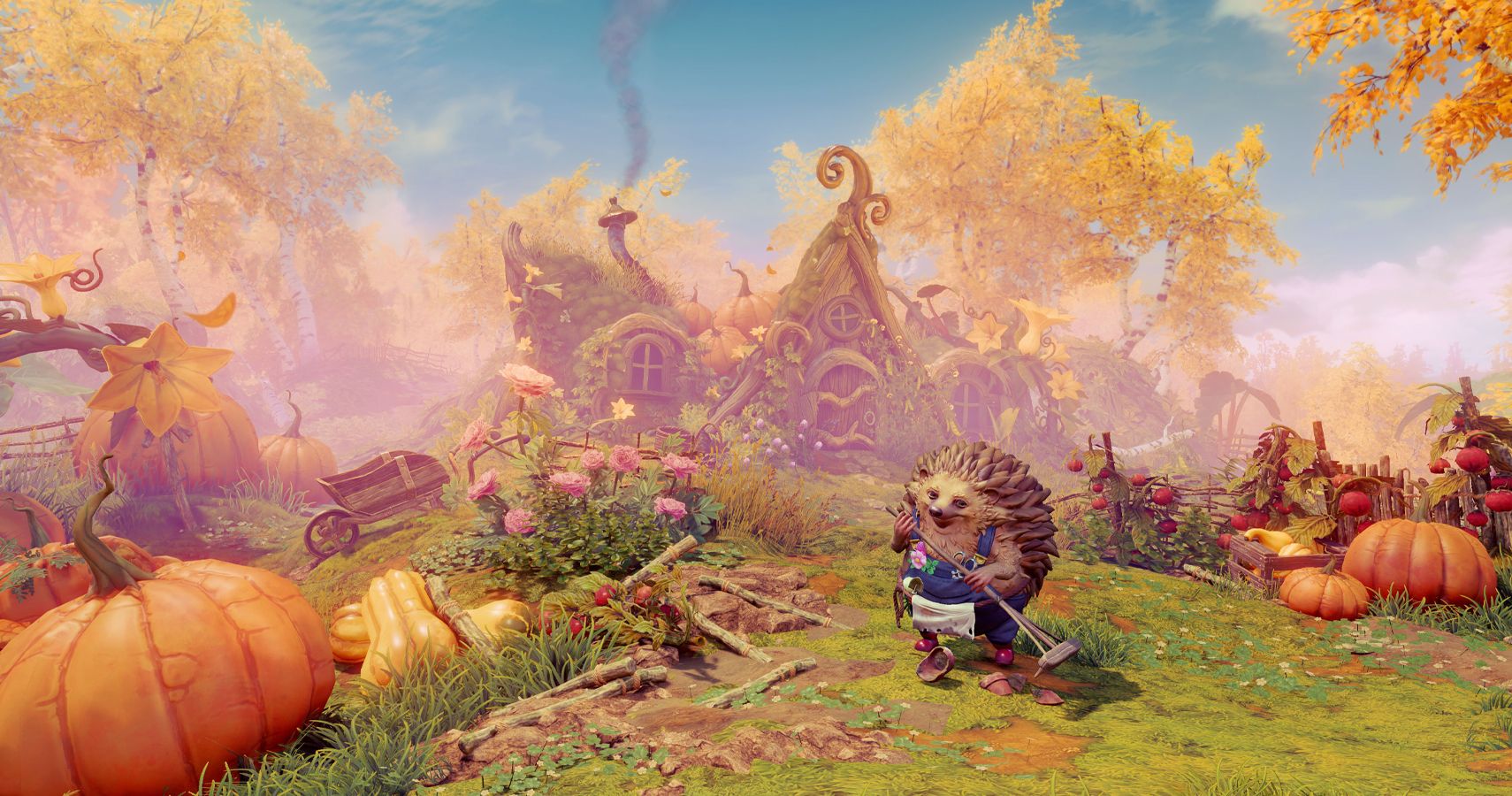When I tried out the first few levels of Trine 4: The Nightmare Prince for our preview, I was floored at the fact that I had never encountered the series before. The magical, whimsical game I experienced in the demo enthralled my inner-child, leaving me wanting more of this series that had somehow flown under my radar. I had some time prior to Trine 4’s launch to go back and check out the first three games in the series, and although Trine 3 wasn’t as up to snuff with the other games, I enjoyed them in the build-up to the new game's full release. Developer Frozenbyte seems to have learned from the shortcomings of the third game, bringing the series back to its beloved form in Trine 4: The Nightmare Prince with incredible visuals, an enchanting score, and thankfully, a return to true 2.5D platformer action.
Come One, Come All
Besides returning to the series staple of 2.5D visuals, one of Trine 4’s best features is the fact that the game opens its doors to veterans and newcomers alike. New players don’t need to have played any of the prior entries to enjoy the game. After a few tutorial levels introducing players to the game’s three playable protagonists and their specialized skills, a few puzzles for which the series is known for, and even a boss battle, new players will feel right at home. Trine 4’s storyline doesn’t directly follow that of the prior games, but Frostbyte does a phenomenal job of conveying the character’s longstanding history with one another so much so, that a weird sense of familiarity is created, making new players feel like they’ve been along for the ride on all of the trio’s previous adventures. That is probably a good thing, too, because Trine 4’s story is largely forgettable.
Trine 4 begins with the three playable characters - Amadeus the Wizard, Pontius the Knight, and Zoya the Thief - living their own separate lives, before being summoned by the wizarding academy to retrieve the troubled young Prince Selius who suffers from uncontrollable magical nightmares that are wreaking havoc throughout the land. The trio travels across a fantastical fairyland in search of Selius, battling his nightmarish creations while also having to deal with their own inner demons.
Combat Woes
“Battling” may be a bit of a generous term, as the combat in Trine 4 feels a bit stale and forced. It wouldn’t be a platformer if there weren’t enemies along the way, but the redundancy of the same 7-8 creatures over the course of five acts gets old pretty quickly. A little variety could have helped elevate the combat scenes a little more, but ultimately, the overall combat system - including boss battles - feels pretty uninspired.
For instance, it’s easy to know when an encounter is about to occur. As players enter an empty room or area, enemies and Super Smash Bros.-style platforms appear out of nowhere. Taking out the enemies is the only way to move on to the next area, but thankfully, the fights don’t take too long and they really aren’t all that challenging. Pontius was my go-to-character for battles, as I seemed to fare best with his blunt melee attacks. Amadeus and Zoya have their own offensive abilities, but none of them really suited my style of play.
On that note, an RPG-like element exists in Trine 4 in the way of a skill tree with abilities that can be learned and upgraded throughout the game. It’s not very intricate, which I was thankful for, but I also never really felt the need to upgrade whenever I had the opportunity. I was able to progress through the game just fine with my beginning abilities. If a new level mechanic presented itself that required a new ability, my characters learned it automatically, leaving me even less inclined to upgrade my abilities on my own accord. This isn’t necessarily a bad thing, but it might be a little annoying for players who are far more interested in those sorts of in-game mechanics than I am.
Perfect Puzzles
Fortunately, what Trine 4 lacks in combat mechanics and story substance, it makes up for in its puzzles that players must solve in order to progress. Clearing paths, crossing ravines, hitting switches, and opening doors are just some of the obstacles that players face throughout each level. Each puzzle is impeccably well-executed. Completing each one left me feeling satisfied and excited to see what the next area had in store. Unlike the combat, the puzzles never felt repetitive. Additionally, some of the puzzles were quite complex, providing plenty of challenge without ever making me feel frustrated (though Amadeus’ nightmare boss level came pretty darn close).
What makes the puzzles even better is the fact that for most of them, there’s not necessarily one specific solution. Amadeus was my primary character thanks to his Box Conjuring and Levitation abilities, which were the skills I used almost exclusively to get around each obstacle. For example, when encountering an out-of-reach ledge, I could (and probably should) have used Zoya’s rope arrows to pull out a platform for me to use as a jumping-off point. Instead, I would jump onto a levitating box and immediately jump to the ledge just before the box fell to the ground. There were plenty of other instances in which I employed solutions that got the job done, but they definitely felt like serendipitous successes rather than the intended solutions. However, the fact that I wasn’t beholden to a certain way solving each puzzle added to my overall satisfaction.
No Nightmares Here
Trine 4 is simple in its foundation of being a 2.5D platformer, but the overall in-game experience is anything but. Gorgeous visuals made me feel like I was smackdab in the middle of a Disney movie, while the soundtrack perfectly captured and brought to life each environment. Fans of the franchise will be overjoyed with Trine 4’s return to form, while newcomers can dive headfirst into an enchanting world that any gamer can appreciate and enjoy.
4 Out Of 5 Stars
A PlayStation 4 code for Trine 4 was provided to TheGamer for this review. Trine 4 is available now for PlayStation 4, Xbox One, PC, and Nintendo Switch.
trine 4




